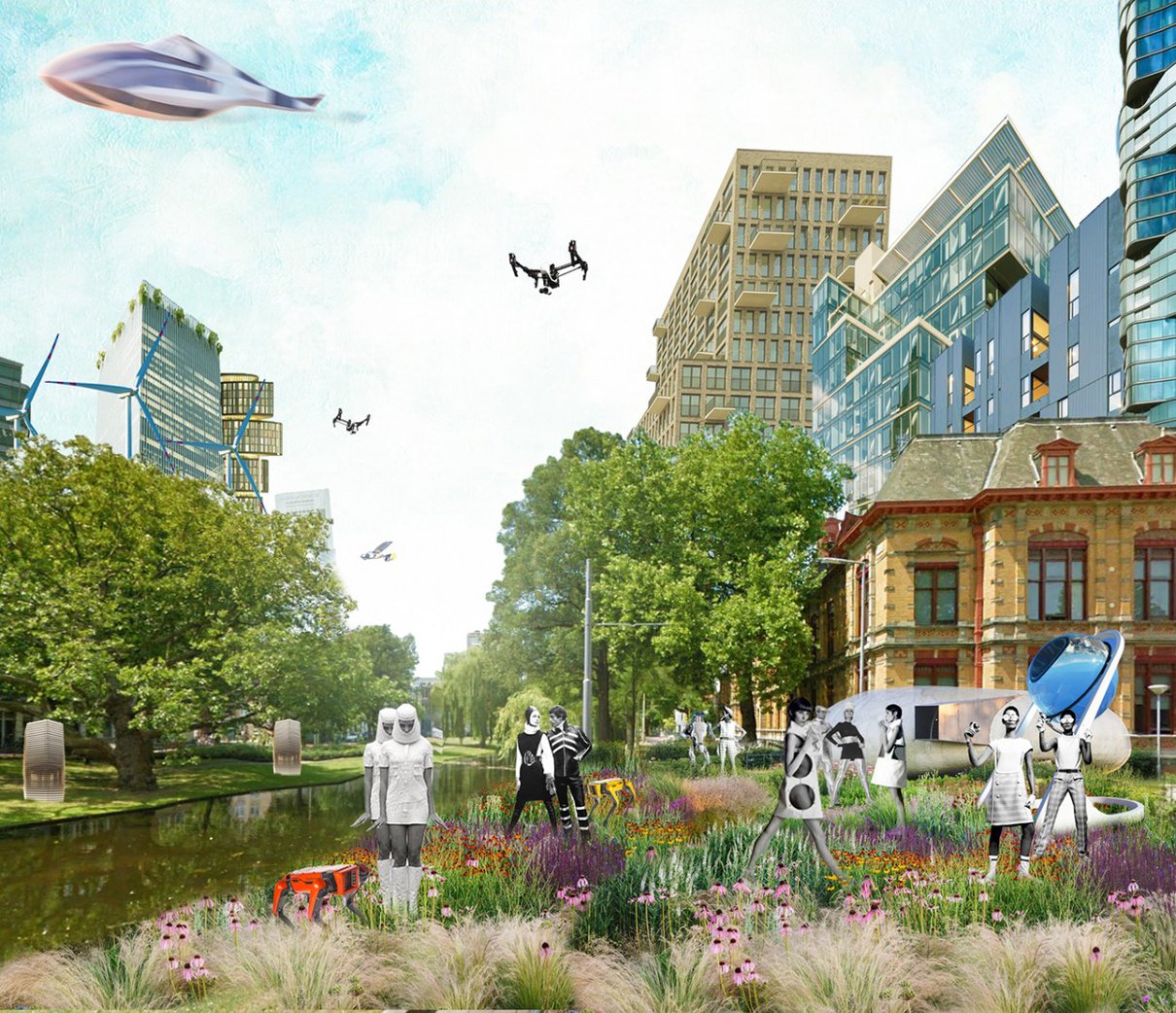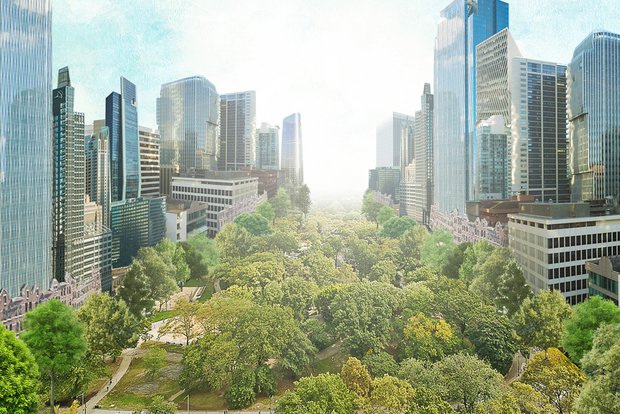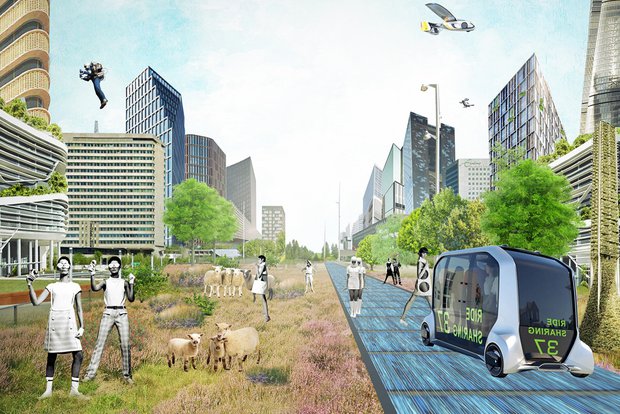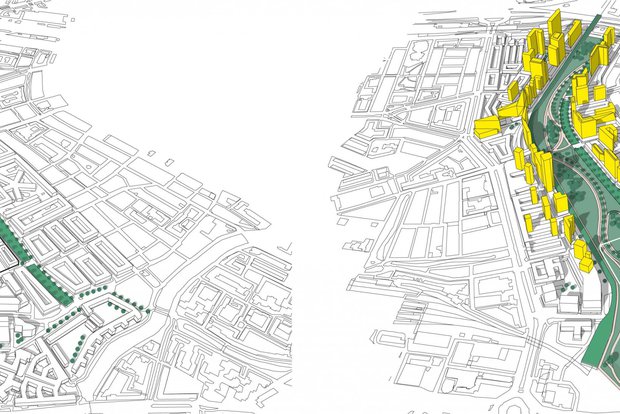
Contrast
The value of historical inner cities is enormous. From every place in the world people fly out to Paris, Venice, Prague and Amsterdam to gape at the ancient buildings, streets and squares. We look back at the past intensively. How come in real estate, we limit the prediction to business cases of 25 years? In these last years ideas and images of the future city seems to mostly develop in Hollywood. Often resulting in an abstract utopia and dystopian ideas meant to support the story in the movie, but doesn’t function as a developing model for the city.
With Contrast we want to engage a conversation about the city in 500 years. With an outtake for following generation to benefit from this. With contrast we implement an ideal to blend nature and city co-existing in a perfect balance. The best examples of urbanism are cities with a high density. The most beautiful natural areas are mostly untouched. In the vision Contrast we intensify nature as well as the city and we search for contrast between both.
For all successful and thriving cities, lean on the historical value that's largely visited. The growing attention for this mass tourism is so strong that many historic inner cities can barely handle the capacity. Remarkable is that the rest of the city, often multiplied in square meters from the inner city, doesn’t get visited. These areas are built after WWII and developed based on function separation. Business areas, office locations and residential areas are monofunctional and lack the diversity that is valued in the historic city. Many of these areas don’t function well and many buildings are vacant. Theoretically they’re cities undefined.
Current technology allows citizens to work everywhere with laptops and tablets, generate local energy with solar panels and produce on small-scale with 3D-printers. It won’t take long until transport and production run out of particulate matter or CO2 emission. It becomes unnecessary to present functions to certain areas. This study case focuses on the question: which part of the monofunctional areas should either be demolished in the long run, or made available to the nature?
Rotterdam is the ideal test case for this question. A city like no other that continuous renews itself, with plenty space for changes. The thought process focuses on two areas; The Zomerhof kwartier (ZOHO) and the Woudestein Campus. For ZOHO applies that it could be the place where in 500 years the nature can be extended to the inner city. For Woudestein applies that in 500 years it could be located on the edge of the city. The city is truly a city and has a sharp dividing line with nature, that’s truly nature.
- Name
Contrast
- Location
Rotterdam
- Design
2018
- Team
David Hess, Thijmen van Haelst, Wouter IJssel de Schepper


